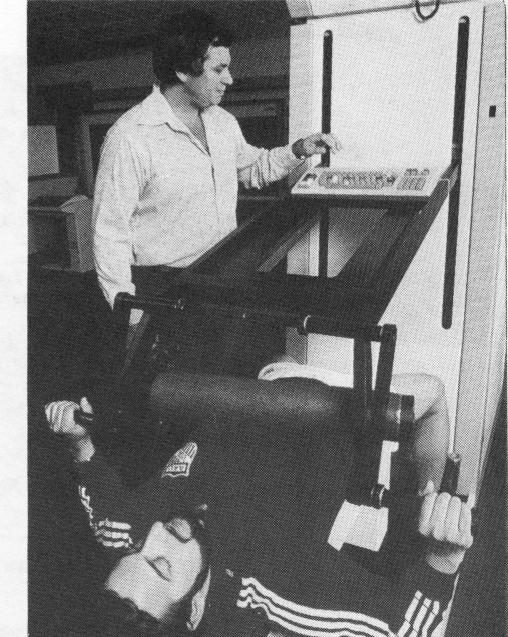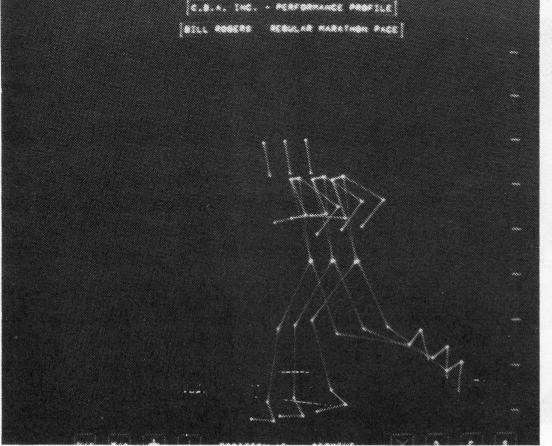| Previous | Index |
Sports Computer
Al Oerter is an Olympic champion. His specialty is throwing the discus. In four straight Olympics he hurled this heavy metal disk far enough to win the gold medal. Al hopes to compete in future Olympics, too. With this in mind he went to a sports computer for help.
Sports researchers are using computers to help all kinds of athletes improve their performance. At the Coto Research Center in California, swimmers, runners, divers and other sports champions all come for help. It all starts when trained technicians make a movie of a particular athlete in action. Then they play the film in super slow motion on a special screen. The screen is divided into thousands of numbered squares. Using a special wand, the technicians touch every square. That gives the computer information about how an athlete moves.
The computer matches parts of the person's body with the numbered squares, then it stores this information. Later an athlete, with the help of a technician, asks the computer specific questions about how he or she is performing. Using all the information it has collected, plus some basic rules about gravity, strength and force, the sports computer comes up with the answers.
The computer also lets athletes see what they're doing wrong. It can make a true-to-life picture of the player appear on a TV screen. This lets an athlete see mistakes that he would miss in real life.
New uses
FOR
COMPUTERS
Above: Dr. Ariel uses machines to collect information about an athlete's strength, rate of breathing and heart beat.
Left: Stick figures on a computer screen help athletes to take a look at how they perform. This one shows marathon racer Bill Rodgers jogging.
And once the athlete spots the mistakes, it becomes easier to start practicing new and better ways of performing.
Of course, a computer can't turn just any person into an Olympic champion. But it can help talented people perform better. Before Al Oerter came to the Coto Research Center, his farthest discus throw in competition was 212 feet (64 m). But with the help of computers, other new training techniques and hard work, he threw it nine feet (2.7 m) farther than ever before!
321 CONTACT October 1982


| Previous | Index |